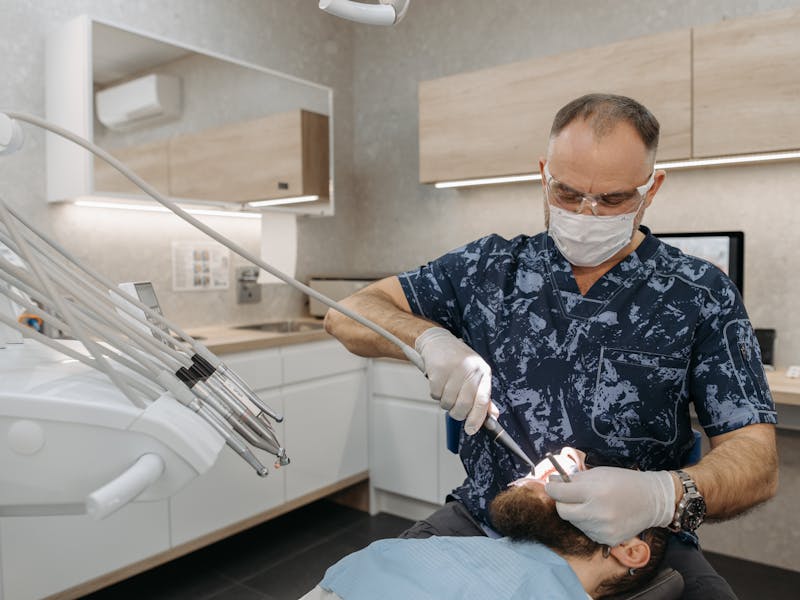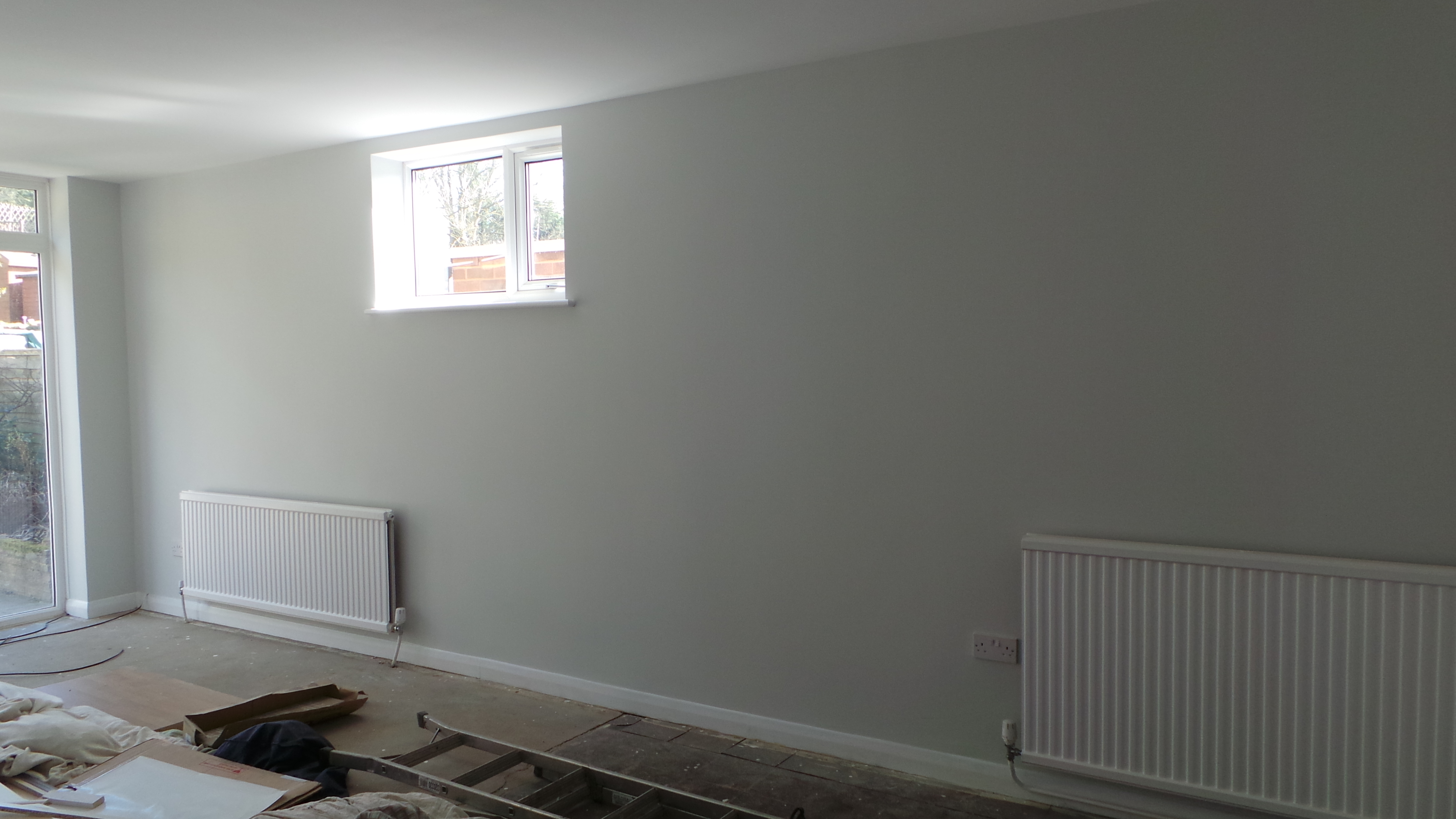Upgrade Your Look With Replacement Veneers

When contemplating ways to revitalise a smile, few options offer such transformative potential as replacing old or damaged veneers. This topic has gained increasing attention in recent years, particularly in London, where high-quality dental care is both readily available and held to rigorous standards. For those looking to refresh their veneers and address concerns related to the appearance or functionality of their existing restorations, the journey often begins with a careful assessment from a trusted professional. Choosing the right cosmetic dentist London residents rely on can be a crucial first step in ensuring that replacement veneers look natural and complement each patient’s unique features.
According to the leading London cosmetic dentist Dr. Sahil Patel of Marylebone Smile Clinic, it is essential to have a clear understanding of a patient’s goals before commencing treatment. He explains: “The key to success is rooted in personalised planning. Understanding why a patient might be unhappy with their existing veneers and what they hope to achieve is the foundation for delivering long-lasting, aesthetically pleasing results. Whether the aim is to fix discolouration or correct an older material type, modern porcelain veneers can resolve many cosmetic issues while preserving healthy tooth structure.”
Veneer Replacement and Its Importance
Veneers have been a popular choice in cosmetic dentistry for decades, helping people attain a brighter and more harmonised smile. Over time, materials and techniques have advanced dramatically, leading to stronger, more aesthetically pleasing options that promise durability and a life-like appearance. However, even the best restorations may need replacing eventually, whether due to natural wear and tear, changes to adjacent teeth, or simply evolving standards of what is considered the ideal smile.
In many instances, the original veneers may have been placed years ago, using techniques that are now outdated. Early veneer materials might have been more prone to staining or chipping, or they might not have matched the natural enamel as seamlessly as the latest innovations. Even if the veneers were well-made and placed skilfully, certain factors outside of a dentist’s control—such as normal ageing, gum recession, or changes in oral health—can prompt the need for a professional review.
People often begin considering the replacement process because they have grown dissatisfied with the shade, shape, or alignment of their current veneers. In some cases, the gum line may have shifted, revealing the edges of the veneers and creating aesthetic inconsistencies. Others may experience sensitivity or recurring minor issues such as slight chips that require repeated repair. Where veneers are concerned, longevity is directly tied to the skill of the dentist, the quality of the materials, and diligent at-home care. Still, no veneer is entirely immune to the effects of time and daily use.
When the moment arrives to replace an ageing set of veneers, it can be an opportunity to gain a fresh new look. Modern dental ceramics and bonding agents are far more advanced than they were even a decade ago. High-quality materials more closely mimic natural tooth structure, allowing a seamless blend with surrounding teeth. Patients who disliked the bulkiness or translucency of their older veneers can benefit from porcelain alternatives that accurately reflect and refract light. All these improvements can result in a refined, natural-looking smile.
Common Reasons for Veneer Replacement
One of the most frequent motivations for seeking replacement veneers is a shift in cosmetic preference. What a patient may have considered the perfect shade or shape ten or fifteen years ago could now feel dated or out of step with their changing facial features. Individuals who have undergone orthodontic work or other cosmetic treatments since their original veneers were placed might find that their veneers no longer match their updated smile. A new or more subtle contour could better suit the patient’s personality and style, delivering an outcome that is both visually appealing and comfortable.
Another driver is wear and damage. Veneers function much like natural teeth, so they are exposed to the same risks, from accidental knocks to daily chewing pressures. Chipping at the edges can affect how a person smiles, speaks, and bites. Stains from coffee, tea, or wine may build up over time, especially if the porcelain or bonding resin is slightly porous or if small cracks have formed. These stains can be difficult to remove through regular dental cleaning, leading to a patchy or uneven look. In some instances, the veneer may start to peel away from the gum line or show micro-gaps, creating areas prone to decay. It is crucial to address such problems promptly, as unchecked decay can compromise the underlying tooth.
Additionally, the health of the gum tissue surrounding each veneer can change over time. If the gum line recedes, or if inflammation occurs due to improper oral care or ill-fitting veneers, the edge between the veneer and the tooth could become visible. This step-down or ridge might contribute to sensitivity or make the veneer appear less natural. Replacing the veneer can correct this border issue and help protect the exposed area, restoring aesthetic harmony.
Benefits of Modern Replacement Veneers
Many who have chosen to refresh their smile with new veneers quickly discover that innovations in materials and techniques have yielded a range of advantages over their older restorations. One of the most notable benefits is enhanced durability. Today’s porcelains and ceramic compounds resist fractures more effectively, are less porous, and display superior strength. This means fewer chips, greater resilience to surface damage, and a more robust result overall.
Another advantage is the potential for improved aesthetic accuracy. Advanced ceramics can better simulate the translucency and texture of genuine enamel, creating a more seamless integration with neighbouring teeth. Whereas older veneers might have appeared overly opaque or unmatched in hue, new technology allows for layers of porcelain that reflect light in a realistic manner. Patients often observe a marked difference in how natural their smile appears in photos or daily interactions.
New veneers can also facilitate better gum health. A precise fit along the gum line minimises bacterial accumulation and irritation, reducing the risk of inflammation. Many dentists now use 3D scanning and digital imaging to design each veneer with remarkable accuracy, ensuring that the relationship between the veneer edge and the gum is as smooth and watertight as possible.
An under-discussed but crucial benefit is the psychological and social impact. Smiling is an essential form of non-verbal communication, and the confidence derived from knowing one’s teeth look their best can influence day-to-day experiences. People who previously felt self-conscious about visible chips or mismatched shades often feel a renewed sense of poise and self-assurance once their veneers are replaced. This boost can have far-reaching positive implications for both personal and professional interactions.
Selecting the Right Dental Professional
Veneer replacement is an investment in both appearance and long-term oral health, so choosing a qualified and experienced dentist should be a top priority. While many practitioners offer cosmetic services, the skill and artistry required for successful veneer replacement can vary significantly. Patients are encouraged to research their prospective dentist’s credentials, evaluate before-and-after photos, and, if possible, speak with former or existing patients about their experiences.
Key considerations include the dentist’s training, their familiarity with the latest materials, and whether they keep abreast of developments in cosmetic dentistry. A dentist who prioritises continuing education and invests in high-quality technology is more likely to deliver superior outcomes. Additionally, the collaborative relationship between patient and practitioner is critical. Open communication ensures that each patient’s aesthetic goals, comfort preferences, and potential concerns are factored into the treatment plan.
In London, the availability of well-established clinics and trained professionals is considerable. Patients often find it helpful to schedule consultations with more than one cosmetic dentist London offers, comparing treatment proposals and cost estimates. Such consultations typically involve an oral exam, dental X-rays or scans, and a frank discussion about what to expect in terms of final appearance, longevity, and aftercare. This transparency helps patients choose a path aligned with their goals, budget, and schedule.
The Replacement Process: What to Expect
The exact process for replacing veneers can vary based on individual circumstances, but it generally follows a sequence of steps designed to ensure precision and comfort. The first stage is the evaluation, during which the dentist assesses existing veneers, examines the underlying teeth, and identifies any necessary preliminary treatments. For instance, if decay has formed near the edge of an older veneer, this must be addressed before the new veneer can be placed.
Following a thorough exam, the dentist may take impressions or use digital scanners to capture the shape of the existing teeth. This imaging helps create temporary and final veneers that align perfectly with the patient’s mouth. In some cases, older veneers need to be removed to allow for an accurate assessment of the underlying tooth structure. The dentist may also discuss potential enhancements, such as refining the shape or adjusting the shade to achieve a more harmonious result.
Temporary veneers often serve as a trial run. They enable both the dentist and the patient to assess the proposed changes in shape and size, ensuring satisfaction before committing to the final design. Patients may wear temporary veneers for a short period, providing feedback on comfort, bite, and aesthetics. If adjustments are necessary, they are made before the final veneers are created.
Once the final veneers are ready, the dentist carefully bonds them to the prepared teeth using advanced resin cements. The bond is often light-cured, achieving a secure attachment and helping to create a seal against bacteria. A well-bonded veneer can last a decade or more with appropriate maintenance. The bond’s strength is one reason veneers can feel as stable as natural teeth.
Recovery and Care After Replacement
Patients who have just received new veneers typically experience minimal downtime. They may notice heightened sensitivity to hot or cold substances for a short period, but this usually resolves quickly. In some instances, the bite may feel slightly different until the patient becomes accustomed to the new shape or until a minor adjustment is made.
Maintaining good oral hygiene is essential to protecting the longevity of the veneers. Regular brushing and flossing, coupled with six-monthly dental check-ups, can keep the gums healthy and minimise the risk of decay at the veneer’s margin. Dentists often recommend gentle brushing techniques with a soft-bristled brush to avoid undue stress on the veneers and the gum line. Patients who have a history of bruxism (teeth grinding) may be advised to wear a night guard to protect the veneers from excessive pressure.
Professional cleanings are also crucial. Although porcelain veneers are highly stain-resistant, routine visits to the hygienist help remove any tartar and plaque buildup around the edges. This care helps preserve a bright, fresh appearance. Avoiding extremely hard foods—like ice, unpopped popcorn kernels, or hard sweets—can further reduce the risk of chipping. Likewise, limiting highly pigmented foods and drinks can help keep the veneers looking pristine.
Longevity and When to Plan for Future Replacements
Modern veneers can last a decade or more, but each person’s situation is unique. Some patients keep their veneers in excellent condition for as long as 15 or 20 years, especially when diligent about care and attending regular dental appointments. Others may find that certain lifestyle habits, such as chewing on pens, opening packages with their teeth, or indulging in sugary or acidic beverages, can shorten the lifespan of the veneers.
Future replacement may be necessary if changes occur in the gum line or if a veneer becomes chipped, cracked, or stained in a way that cannot be remedied through polishing. Some people decide to replace veneers preemptively if newer materials or techniques become available, or if their aesthetic expectations evolve over time. Scheduling routine appointments allows a dentist to monitor any wear or changes, providing early intervention when needed.
Cost Considerations
The price of replacing veneers will vary based on factors such as the number of veneers needed, the complexity of the case, and the clinic’s location. London-based practices may charge a premium compared to smaller regional towns, reflecting the higher operating costs within the city. For many patients, however, the convenience and assurance of working with an experienced cosmetic dentist London hosts can justify the investment.
Insurance policies in the UK may not fully cover cosmetic procedures, although some portion of veneer replacement might be covered if it addresses a functional issue. Patients interested in financing options should discuss this with their chosen clinic. Many offer payment plans or partnerships with third-party financing companies, making the process more manageable over time.
Whether paying out of pocket or through a financing arrangement, it is important to weigh the long-term value of a well-executed replacement. High-quality veneers that are meticulously planned and fitted can deliver both aesthetic and functional benefits for many years. In some respects, the cost of ongoing maintenance and potential early failures can be higher if one opts for less skilled practitioners or lower-grade materials. Therefore, quality should remain a top priority.
Candidacy for Veneer Replacement
Most people who already have veneers and are in good oral health can be suitable candidates for replacement veneers. Issues such as active gum disease, extensive decay, or significant bone loss around the teeth might need to be addressed before a cosmetic procedure can be carried out. In some cases, the underlying tooth may not be able to support a new veneer if it has suffered structural damage. If so, a crown or another restorative approach may be recommended instead.
A reputable dentist will thoroughly evaluate each patient’s teeth, gums, and bite prior to beginning treatment. If any underlying problem exists, such as an old root canal that needs revision or an incompatible filling, it is generally advisable to resolve it first. Attempting to place replacement veneers without addressing foundational concerns can compromise the outcome and shorten the lifespan of the restoration.
The Consultation Process
Many patients find it beneficial to book a consultation specifically focused on evaluating their existing veneers. This typically involves a discussion of the patient’s concerns and aesthetic objectives, along with an examination to determine whether the veneers are failing, outdated, or merely in need of a minor polish. In situations where a patient is uncertain if replacement is necessary, the dentist can provide objective insights, including digital images or mock-ups that show how the smile might appear with updated veneers.
During this consultation, it is wise to ask about the various materials available. Porcelain remains popular due to its durability, stain resistance, and natural look. Composite veneers can be an alternative, but they may require more frequent maintenance and can be more prone to staining. The discussion might also touch on the number of veneers to be replaced. Although some patients replace only the veneers that are worn or damaged, others opt to replace all existing veneers at once for a uniform aesthetic result.
Exploring Different Materials
The advancements in ceramic technology have given rise to numerous porcelain varieties, each offering specific benefits. Lithium disilicate porcelain, for example, boasts high strength, making it suitable for patients who need a more robust material. Layered porcelain can replicate the layers and translucency of real enamel, providing an exceptionally natural look.
Choosing the right material can depend on multiple factors. Patients who frequently consume staining beverages might prefer a porcelain less prone to discoloration. Those who clench or grind their teeth may benefit from a stronger ceramic. If the underlying tooth is quite dark, a dentist may opt for a slightly thicker or more opaque veneer to ensure uniform colour across the smile line.
Whichever material is chosen, a careful colour-matching process is critical. Dentists often use a shade guide or digital colour scanning, taking into account the patient’s natural tooth colour, complexion, and personal preference. Some patients prefer a bright, Hollywood-style whiteness, while others opt for a hue that, though dazzling, appears more natural for their age and facial structure.
Addressing Dental Anxiety and Other Concerns
Some people hesitate to replace veneers simply because they worry about potential discomfort or prolonged procedures. In reality, veneer replacement is generally no more invasive than the original placement. Local anaesthetic is used to numb the area, and sedation options may be available for individuals with heightened anxiety. Modern techniques typically allow for minimal preparation of the tooth, preserving as much natural structure as possible.
Others might be concerned about the final aesthetic, especially if they had a disappointing experience in the past. Seeking out a dentist who encourages patient input and uses visual aids—such as digital smile design or mock-up models—can alleviate many of these worries. A collaborative approach where patients view and approve temporary restorations before the final bonding significantly reduces the likelihood of dissatisfaction.
It is also worth noting that advanced training and experience in cosmetic dentistry go beyond mere technical ability. A well-rounded approach accounts for the patient’s facial symmetry, lip shape, and even subtle nuances like how the smile changes when the patient speaks. This artistry can be especially important for those who previously felt their veneers did not truly fit their face or look entirely natural.
Long-Term Outlook for Replacement Veneers
Veneer technology continues to evolve, with innovations aimed at improving longevity, comfort, and aesthetics. Nanotechnology and additive manufacturing have the potential to refine ceramic production even further. Some research explores materials that integrate better with gum tissue or that offer self-repairing properties. While such futuristic prospects may still be in development, they signal that people replacing their veneers today can already benefit from years of cumulative advancements.
In the meantime, good oral hygiene, regular professional check-ups, and a mindful lifestyle remain the cornerstone of making any investment in veneers last. Even the sturdiest materials can weaken under abuse. Patients who use their teeth to open bottles or chew on extremely hard objects risk damaging the edge of the veneers. Those who smoke or indulge in large amounts of coffee might see stains build up more quickly than non-smokers or those who moderate their caffeine intake.
Still, the rewards of a well-executed veneer replacement can be life-changing. Beyond the obvious boost in self-esteem, having a smile that feels comfortable, secure, and visually harmonious can enhance social interactions, contribute to professional success, and simply make daily life more enjoyable. For many, the decision to replace older veneers has become a pivotal moment in their oral health journey, leading to a reinvigorated sense of self.
Conclusion
Replacing veneers is an opportunity not just to fix what might be broken or outdated, but to embrace new materials, improved techniques, and a refreshed aesthetic that aligns with who one is today. From the initial consultation with a knowledgeable professional to the final bonding of brand-new restorations, patients can expect a transformative process that delivers both functional and cosmetic benefits.
Those considering veneer replacement should begin by consulting with a skilled dentist capable of balancing clinical precision and artistic insight. In a city like London, patients have access to experienced professionals who can provide guidance tailored to their unique oral health background and personal style preferences. Through open communication, advanced materials, and meticulous craftsmanship, it becomes possible to achieve a smile upgrade that radiates confidence and longevity.
The advantages of modern veneers—superior durability, accurate colour matching, and comfortable fit—make them an appealing choice for individuals who want to keep their smile looking its best. Whether one’s original veneers have simply reached the end of their lifespan or a more significant transformation is desired, contemporary replacement methods can offer a bright, balanced outcome. As long as patients maintain a consistent dental hygiene routine and schedule routine check-ups, the new veneers can be a reliable companion for years to come.
For those seeking a fresh new look that respects the structural integrity of their teeth, replacement veneers stand out as a worthwhile, carefully curated solution. Dental practices that focus on cosmetic excellence and patient well-being can guide each individual through the intricacies, ensuring that the final result meets, if not surpasses, initial expectations. With the proper planning, collaboration, and aftercare, renewed veneers can revitalise smiles in a way that is both aesthetically striking and functionally sound.





